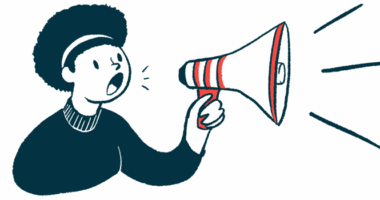Crip Wealth and the Tapestry of Pride


The problem with disability pride is that it’s a little bit mythical.
It’s not something you can describe or explain. It’s an enigma. A paradox. It shouldn’t exist, but it does, and the illogic of it — valuing something the world abhors — makes the concept seem impossible. You can’t understand disability pride unless you’ve experienced it, and you can’t experience it unless your bodymind is, for lack of a better term, a wreck.
I love Disability Pride Month. But I also hate it. How am I supposed to distill something so complex, so varied and irrational, into something that abled folks will accept and embrace?
How do I describe the euphoria of leaving the hospital for the first time in weeks? Coming so close to death, yet surviving. Knowing that despite its aches and borderline lethal quirks, your bodymind came through for you. It put up a fight, all so you could feel the sun on your face, and burn the roof of your mouth on cookies fresh from the oven.
It’s a kind of rebirth, leaving the hospital after a prolonged stay, and it’s unique to our community. It’s ours, a thread in the tapestry of our pride.
How do I describe the thrill of achieving something that was considered impossible? Breaking life expectancies. Graduating high school or college. Using our bodies in small, mundane ways — shaking a hand, or holding a pen, or hiking the Yosemite trails in our power wheelchairs. Grabbing something from the top shelf. Navigating a busy corridor. Proving that you can. All that a thread in the tapestry of our pride.
How do I describe belonging to a community? A community of misfits, to be exact. A family. How do I describe the instantaneous connection that forms between people with the same condition? Our lives are not the same, but there’s a kind of knowing, an unspoken bond. We get it. We get each other. And that knowing is absent in other relationships — people who sympathize and want to support us, but don’t have the lived experience to back it up.
How do I describe one of the most important relationships in my life? Sherry, my friend and fellow columnist, who lives halfway across the world. Sherry, who forces me to rest, who reminds me every day that my disability does not negate my humanity. We have been through so much, but we are stronger for it. We know how to care for each other. We know how to show up. We know that love is equal parts personal and political.
Another thread. An ever-growing tapestry.
Our resilience. Our stubborn hope. Our sense of imagination — the world was not built for people like us, but that hasn’t stopped us from dreaming, hasn’t kept us from asking questions. What would radical accessibility look like? What about community care? The normalization of disability, the celebration of abnormal bodyminds? What would it look like to lean into our differences? To finally stop resisting?
To be disabled is to negotiate. Every moment of every day, balancing what could be with what is.
To be disabled is to cultivate flexibility. Some days, I’m overflowing with energy; some days, it’s all I can do to scroll Twitter. I try to map the currents of my energy, but they’re never static, always shifting, poised to ruin plans at the drop of a hat. Every day is an adventure, and disability forces acceptance.
To be disabled is to grieve. All the lives we could have lived; all the people we could have been. To be disabled is to love despite the grief, to embrace what is without sacrificing the vision of what could be.
To be disabled isn’t just to fall. It’s to pick yourself back up — over and over again.
How do I explain that disability pride is multifaceted? I take pride in my disability not because it is wondrous but because, despite everything, it has made me wondrous.
The illogic of disability: In my brokenness, I become a wondrous thing. I become more than the sum of my parts.
Social justice activist Stacey Milbern called this crip wealth. In her book “Care Work,” Leah Lakshmi Piepzna-Samarasinha wrote, “I see disabled people every day thinking of ideas disabled people never would have, primarily by focusing their time and efforts on using what they do have, and the space between, rather than putting their attention on the limitation or lack of ability.”
The tapestry of disability pride is rich and impossible, and at its heart, an exercise in imagination. We see futures that no one else can. Together, we become wondrous.
***
Note: SMA News Today is strictly a news and information website about the disease. It does not provide medical advice, diagnosis, or treatment. This content is not intended to be a substitute for professional medical advice, diagnosis, or treatment. Always seek the advice of your physician or other qualified health provider with any questions you may have regarding a medical condition. Never disregard professional medical advice or delay in seeking it because of something you have read on this website. The opinions expressed in this column are not those of SMA News Today, or its parent company, BioNews, and are intended to spark discussion about issues pertaining to spinal muscular atrophy.
The post Crip Wealth and the Tapestry of Pride appeared first on SMA News Today.




